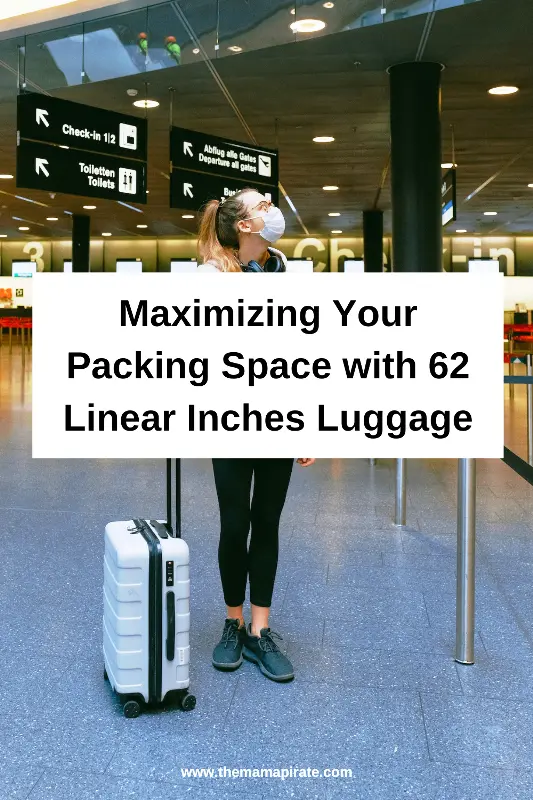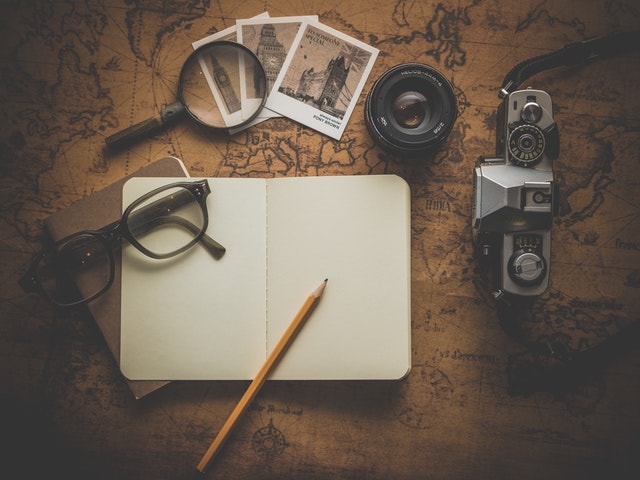Last Updated on 2 years by Namrata
Do you love traveling and are traveling for the first time in an airplane? Are you a mother traveling with your babies alone or a businessman going for a work vacation? Finding the perfect luggage can be a game changer for whoever you are and whatever is the reason for your travel.
Knowing and following the Transportation Security Administration (TSA) guidelines when boarding a flight for a hassle-free journey is important. Each airline has a restriction on the amount of weight one can carry. For extra weight, you have to pay more. Nobody wants to pay an extra penny for careless packing. This comprehensive guide on 62 linear inches of luggage is all you want to read to pack like a pro for your next trip. So, hop into it!
What is 62 linear inches of luggage?
Luggage size is important while traveling, and airlines have rigorous guidelines governing the dimensions of carry-on and checked bags. They prefer luggage with maximum linear dimensions of 62 inches or 158 cm. By 62 inches, one refers to the overall measurements of the bag, including length, breadth, and height. The dimensions of your bag will determine if it will pass the carry-on check at the airport or not.
You can accurately measure your bag before the trip to avoid paying extra money. If your cargo is too great, the airlines will charge for extra storage. They may only permit it if your luggage is manageable. You are charged according to the weight of the things you carry along. So, ensure your luggage is less than 62 inches from top to bottom before traveling for a hectic-free journey. You can use the below-mentioned formula:
Linear Inch measurement = length + width + height
There are a few ways to get past luggage size restrictions, which is fortunate because they can be challenging. Your luggage should meet the airline’s specifications for checked bags (62 linear inches) if it is at least 14 inches wide and 22 inches tall. You should keep this in mind when packing because you’ll need space in case they grant you an unexpected upgrade!
The company uses linear inches in many situations where an object’s overall size matters more than its precise dimensions. Because precise space consumption and cost computation depend on knowing the whole size of a box or piece of luggage, this unit is particularly crucial for the aviation, shipping, and logistics industries. You can yourself measure your bag by the following steps:
- Lay your bag flat and put a tape measure next to it before anything else.
- You should note the length of the bag, measured from end to end.
- Next, determine the bag’s breadth in the middle and note that measurement.
- After that, measure the bag’s height when its base supports it.
- When the bag stands erect on its base, measure it from front to back at its widest point to determine the depth.
- If the total of all four measurements equals or exceeds 62 inches, you have properly measured your bag by the specifications!
Carry-On Luggage Size Restrictions
The size of carry-on luggage varies according to the airline. You can see your carry-on and personal item restrictions when booking your ticket. A personal item is often a compact bag that can fit beneath the seat in front of you, such as a small backpack, purse, briefcase, diaper bag, camera bag, or any other item of a comparable size. Any size bag, from a roomy backpack to a compact rolling suitcase, can be used as a carry-on. Here are some typical carry-on luggage size restrictions by the airlines:
- The maximum carry-on luggage dimensions are 22 (length), 14 (width), and 9 (height) inches, including the wheels and handles.
- Some airlines do not have a weight limit, but they do require that passengers can lift anything that fits in an overhead bin.
These are the typical carry-on size restrictions, though each airline may have its own specifications. Before your journey, you must be familiar with the policies of the airlines you will be boarding.
The TSA liquid rule, sometimes called the 3-1-1 rule (3 ounces, 1 bag per 1 passenger), is simple to understand. It states that you can transport a quart-sized bag of liquids, gels, aerosols, creams, and pastes through the checkpoint in your carry-on bag. You can restrict them to travel-sized containers with no more than one item weighing 3.4 ounces (100 milliliters). Any liquid in larger containers must be checked as luggage and may incur additional charges for being too heavy.
Checked Luggage Size Restrictions
You can check one bag and bring one on board with you. There is typically a size restriction and a 50-pound weight cap per checked luggage. The most typical permitted maximum bag size is 62 linear (total) inches. The standard bag size for going through security is 27″ x 21″ x 14″.
For a price, airlines will accept overweight, large, or additional baggage. The airlines are usually very strict in implementing these restrictions, which can be expensive. To prevent paying excessive costs, make sure you are fully aware of your airline’s checked baggage regulations. The authorities checked the bags at the airport, and they might break the lock if it is locked. To prevent any potential harm to your luggage or locks, try a TSA-approved lock. Never pack film in checked luggage. The screening equipment could irreversibly harm your film.
There are many options for luggage and travel gear that can make your journeys easier, safer, and more convenient. Always pack your carry-on bag with items like cameras and prescription medication. Ensure all your bags and luggage have luggage tags with personal information written inside and out. Make a copy of your passport if you are going abroad. Keep a copy of your itinerary with the names, phone numbers, and flight numbers.
Benefits of 62 Linear Inches Luggage
Understanding the value of linear inches might help travelers avoid unforeseen circumstances or extra costs. By measuring it before leaving, you ensure your luggage complies with the airline’s size requirements. Additionally, knowing linear inches might assist you in selecting the appropriate bag or luggage according to your needs.
For travelers, 62 linear inches is crucial because it frequently delineates when it’s okay to move on and necessary to check in. It’s crucial to remember that airlines have tight rules on checked bag dimensions, and going above those limits might lead to extra fines or luggage restrictions. Your chances of having your baggage recognized as a normal check bag without paying additional costs increase if you maintain it within the 62 linear inch range. This size bag allows you enough room for packing while being easy for airport workers to handle and load onto the aircraft. Some advantages of 62-inch linear bags are:
1. A large area
This baggage provides extensive packing space, making it ideal for storing more stuff for extended travels.
2. Avoiding Extra Charges
You can save money on airline excess baggage fees by keeping your luggage within the size restrictions.
3. Versatility
To accommodate a range of travel tastes, luggage that measures 62 linear inches is available in several shapes, patterns, and materials.
4. Durability
By spending money on a high-quality 62-inch bag, you can be confident that it will last years of use and travel.
5. Compartments
Most of these bags include many compartments, which makes it simple and practical for you to arrange your items.
Top 5 62 Linear Inches Luggage Options
The 62 linear-inch rule is important for travelers since it frequently distinguishes between when it’s okay to continue and when it’s necessary to check-in. It’s important to remember that airlines have rigorous regulations regarding the dimensions of checked bags, and exceeding such limits could result in additional fees or luggage restrictions.
If you keep it inside the 62 linear inch range, your chances of getting your luggage accepted as a standard check bag without incurring additional fees increase. With this size bag, you have enough space to pack, making it simple for airport staff to handle and load onboard the airplane. Here are the top 5 62 linear inches luggage options for your next travel:
1. Samsonite Winfield 2 Hardside Luggage
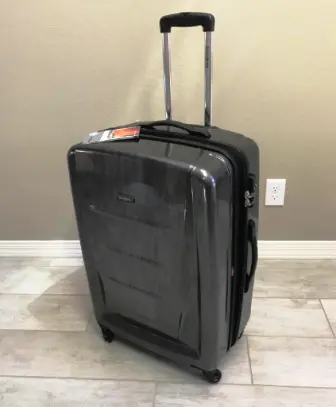
A sleek polycarbonate exterior with a range of colors covers the backpack. It is incredibly tough and sailed through rigorous testing without even a scratch. The polycarbonate slightly flexes to absorb shocks before returning to its original shape. The only issue with the bag was a tiny scuff since there were no big dents or gashes. Additionally, the bag is easy to move around on several surfaces, including gravel and carpet.
The bag’s interior contains an expanded storage system with compression straps and a mesh barrier on one side, allowing you to separate clean clothing from used ones as the trip progresses. Finally, the price of this bag is on the lower end of the mid-market range, making it a competitively priced purchase. The Samsonite Winfield met every need for a top-notch checked bag for all travelers.
2. Delsey Paris Chatelet Air 2 28” Spinner Suitcase
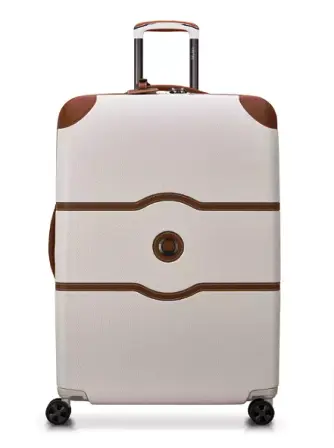
The Delsey Chatelet Airline hardshell suitcases have a stylish (vegan) leather trim and contrasting stitching that mimic the timeless style of vintage travel trunks yet are incredibly strong and light. With separate laundry and shoe compartments, this huge bag has plenty of interior storage space, and each side of the clamshell has a zipper flap with mesh pockets and compression straps. However, those massive primary compartments would benefit from having packing cubes inside them since they are so big.
The white suitcase with brown trim is a fan favorite. The suitcase is available in four colors. Even after jumping on top of the case, there were no permanent dents because these were so simple to remove—you can do it with your fingertips. Additionally, the bag’s 10-year warranty is evidence of its robustness, and you’ll be able to use it for a very long period.
3. Tumi Alpha Medium Expandable 4-Wheeled Packing Case.
While money may not be able to buy happiness, it can certainly buy you a good suitcase. This enormous luggage from the well-known travel company Tumi weighs the same as a giant. It is by far the biggest bag on our list, weighing almost 17 pounds. Since most checked bags must weigh less than 50 pounds, the bag significantly reduces your allowed weight and is preferable for land or sea travel rather than air travel if you’re pushing it.
Putting weight worries aside, we adore this bag’s sturdy construction, generous capacity, and simple-to-use organization system. Although we would expect this bag to have a lifetime warranty for its advertised price, it has only a five-year limited warranty. Nevertheless, we discovered it was tough, even when struck with a baseball bat (due to the ballistic nylon composition), and also simple to use. Just decide whether or not the extra weight is a worthwhile trade-off for the inside space.
4. Bagsmart Carry-on Luggage
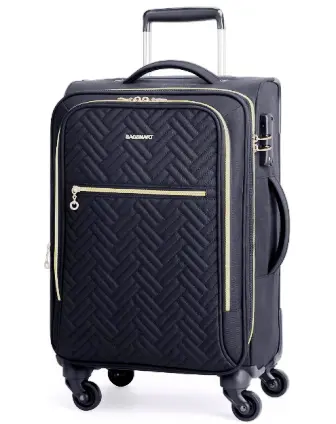
The exterior of this bag features a side pocket to store a water bottle or an umbrella in addition to two spacious pockets for quick-reference items like boarding cards, periodicals, books, or A4 documents. It is an easily organized carry-on luggage featuring an internal mesh pocket, a tiny zippered pocket, and straps. Travelers have several carrying choices thanks to the top and side carry handles.
Softside expandable luggage offers 43L and an additional 8L expansion capacity for all sizes, allowing an additional 2″ of breadth. With the amazing expandability and handy design, you can easily pack up to eight T-shirts, five pairs of jeans, two coats, one pair of shoes, and other travel necessities. Women’s luggage is ideal for 4- to 7-day train and automobile journeys.
5. SwissGear sion soft side expandable roller luggage
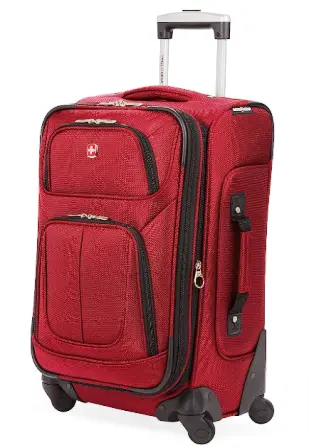
With this chic carry-on bag’s 360-degree multi-directional spinner wheels and a locking retractable push/pull handle, you can easily move through a congested airport or down tight airplane aisles. This ergonomically extensible luggage has front compartments with an ID badge integrated and is 22.75 x 14.25 x 10.25 inches overall.
Secure, long-lasting, and ample parking space is present in this expandable travel case, which is constructed of tough, scuff-resistant polyester fabric and has a fully lined interior. It also has adjustable tie-down straps for securing clothing in place. This baggage bag maximizes packing efficiency with a detachable zipped wet bag, a sizable mesh lid pocket, and a packing pocket for small things and accessories. This roller suitcase’s reinforced padded top handle and integrated side and bottom handles make lifting and carrying your stuff simple.
Is there any difference between 62 linear-inch bags and the standard carry-on luggage? Of course! “62 linear inches” refers to the suitcase’s overall measurements, determined by summing the length, breadth, and height. This kind of luggage is frequently utilized as checked baggage even though many airlines forbid it.
On the other hand, a conventional carry-on bag has size restrictions imposed by airlines to guarantee that it fits in the overhead bins or under the seat. The typical carry-on sizes are 18 to 22 inches in length, 14 to 16 inches in breadth, and 9 to 10 inches in height. Passengers can easily access their necessary items on flights, thanks to this.
Lightweight 62 Linear Inches Luggage
Here is a list of the best lightweight 62 linear inches luggage.
The AmazonBasics Hardside Spinner is considerably lighter on the wallet at 12.2 lbs (approximately 2.5 lbs more). With outside dimensions of 12.7 x 21 x 30.7 inches, including wheels, and total linear dimensions of 64.4 inches, it maximizes your packing space as a Max-Size checked bag. It slightly exceeds the 62-inch maximum most aircraft allow, but it shouldn’t be a problem and will be approved without any issues by any major airlines.
To pack as much as possible, a 28″ SPINNER LUGGAGE is the best-checked luggage for extended journeys. Overall measurements are 28.0″ x 19.75″ x 12.5″: 31.0″ x 20.0″ x 12.75″, 11.5 pounds in weight. Products from Samsonite are put through a lot of testing to ensure they live up to high standards. A 10-year warranty is there for material and workmanship issues with this bag.
The Travelpro Maxlite 5 29″, a sizable soft-sided suitcase, only weighs 8.5 lbs. Its outside measurements are 31x21x13, giving it 65 total linear dimensions, which is 0.5 pounds lighter than its predecessor Maxlite 4 model. Again, this is bigger than the standard 62″ allowed, but most airlines shouldn’t have any problems with it.
The Maxlite 5’s interior is 29 x 20.5 x 8.5 inches, making it a fairly long and wide space to pack. It is not as deep as some other suitcases, but it can extend to offer an extra 2 inches of depth.
Durable Materials for 62 Linear Inches Luggage
To have a positive travel experience, selecting the appropriate luggage bag material is essential. The type of material used in a bag affects how well it safeguards possessions, how convenient it is to move, and how long it will last.
• Using lightweight materials lowers the weight and makes moving and lifting luggage easier, minimizing the strain you put on your body.
• Using a robust material protects your luggage from damage and protects your belongings while handling.
• For some travelers, how their luggage looks and feels is crucial. Therefore, the material can also have an impact.
Therefore, it is essential to comprehend the traits and benefits of various luggage bag materials to make an informed choice to suit your trip requirements.
The manufacturers use many materials to make 62-inch linear bags, each with specific advantages and qualities. The most prevalent materials for these bags are below:
- Hardshell
For individuals looking for a dependable and durable bag to store their possessions while traveling, these hardshell 62-inch linear bags are the ideal option. Using these bags constructed of robust, hard plastic shells can lessen the possibility of knocks and bumps during transit.
The materials used to create hardshell t62-inch linear bags are strong, like polycarbonate, polypropylene, and ABS plastic. They shield your possessions from dents and scrapes and provide superb protection. They can be hefty and are susceptible to cracking under intense pressure, which is a drawback.
- ABS Plastic
Due to its durability, impact resistance, and high-temperature resistance, the companies use ABS plastic in 62-inch linear bags. If you’re a frequent traveler looking for a bag that will handle everyday use and abuse, ABS plastic bags are a terrific option. The fact that ABS plastic might scratch or shatter over time is a significant disadvantage.
- Polycarbonate
Hard-side luggage frequently makes use of the thermoplastic material polypropylene. It can bend without breaking since it is lightweight, impact-resistant, and highly flexible. It is the second most resilient material used in baggage after polycarbonate. It is suitable for all types of weather because it is waterproof and tear-resistant. When it comes to keeping your possessions, polypropylene 62-inch linear bags are a great option for both business trips and vacations.
- Soft-shell
Soft-shell 62-inch linear bags come in various designs and materials, like leather, nylon, and polyester. They are composed of thin, flexible materials. Many have multiple pockets, and you can enlarge them to utilize them to arrange your items. A soft-shell 62-inch linear bag is a good option if you want a bag that is both portable and strong. These bags have the drawback of offering less protection than hardshell bags.
- Nylon
Due to its lightweight and long-lasting qualities, nylon is a popular choice for 62-inch linear bags. It is also water-resistant, making it a fantastic option for travelers who may experience rain throughout their journeys. For regular travelers who require a bag that can tolerate all weather conditions and is easy to carry around, utilizing nylon trolley bags has a lot of benefits. But compared to ABS plastic or polycarbonate, nylon 62 linear-inch bags are less strong.
- Leather
Without a doubt, leather 62-inch linear bags are a timeless and stylish choice for travelers. Leather is an excellent choice for regular travelers who need a bag that will last a long time and is sturdy because it is a strong material to withstand wear and tear. Despite being substantial, leather 62 linear inches bags could need more upkeep than other bags.
Finding the Best Deals for 62 Linear Inches Luggage
There are tons of options available for 62 linear-inch travel bags. The needs of every traveler are unique, and these needs vary depending on the purpose and duration of the journey. Is there a way to find the best deal on luggage bags? The following section will help you narrow down your list.
Think about your options.
When you start looking for baggage, it’s simple to need clarification on all available alternatives. There are various types of baggage, from standard suitcases to duffel bags, backpacks, and everything in between.
For shorter excursions where you don’t need to pack a lot, backpacks are the best choice. They can’t fit as much because of their tiny size, but they work well as carry-ons. Having a high-quality rucksack as part of your luggage collection is a terrific method to avoid checking bags if you frequently go on shorter vacations, such as day outings or weekend getaways.
Examine the material of the bag.
There are primarily two luggage types: soft-sided and hard-sided. Soft-sided bags are better if you want to stuff them nearly to the top (or slightly over). Verify if the interior is lined with a waterproof material to keep everything dry.
Remember that even quite robust textiles can rip, though you can frequently mend it with duct tape or something similar. Some tour operators need soft-sided luggage, especially if you’re doing an overland trek or other journey where you will carry your pack on animals or on top of a vehicle. Hard cases are strongly built to withstand any impact. However, if you’re stuffing, they may be heavier when unpacked and more difficult to close.
Seek out comfortable features.
Nowadays, companies make baggage with the traveler in mind. If you look at it, you can find all kinds of unusual features and parts. For instance, some baggage manufacturers include waterproof pockets perfect for holding toiletries you don’t want to risk spilling on your clothing or suit. After a beach or hotel pool trip, you can store wet bathing suits in these compartments.
Some modern luggage, frequently referred to as “smart luggage,” even has a built-in battery pack that you can use to charge your electronics while traveling. It is fantastic for travelers who are sick of searching for an outlet to charge their phones, tablets, or other electronics at the airport. You can keep your devices fueled wherever your travels take you as long as you ensure your battery pack is charged before you leave. However, ensure you know the regulations for traveling with devices before purchasing smart luggage.
The number of wheels
Previously wheeled luggage had two wheels, but most of the models now have four. With four wheels, you can easily push or drag the suitcase in various directions. The two-wheeled bag has the advantage that once you tilt it upright, it remains put and won’t roll away, which is helpful while standing on a slope but is not a deal breaker. Additionally, two-wheeled bags perform best on any rocky terrain. When evaluating a wheelie bag on a smooth shop floor, remember that you might wish to use it on cobblestones or other difficult terrain.
Select a 62 linear inches bag that outstands
How annoying is it to wait at the baggage claim carousel for your bag to see someone else take it or not to distinguish your bag from someone else’s? It is a typical issue, particularly with “plain” suitcase designs. Finding a strategy to make your luggage stand out will help to know whose luggage is coming off the conveyor belt if you frequently check your bags and travel a lot. Therefore, avoiding using conventional colors and patterns while purchasing luggage is often advised. Even though it could be simpler to find a plain black bag, remember that everyone else on your flight is probably also carrying a plain black bag. Even if your suitcase has a
luggage tag, it may be mistaken for someone else’s since not all passengers are vigilant enough to check tags before grabbing a bag off the baggage belt.
Consider the handle you’ll need.
The most popular handles are telescopic ones stored away when not in use. Double-pole handles offer superior balance, and single-pole handles are highly durable. Make sure the handles are sturdy and won’t break easily. Also, ensure the handle length is comfortable so you won’t have to squat to use it.
Remember to consider security.
Address security and safety when looking for the best luggage. It is especially true if you bring expensive items, such as gadgets, on your trip. Keeping your valuables in a carry-on at all times is typically the best approach to keep them secure while traveling. Of course, it’s only sometimes possible to do this. If you carry a bag containing valuables, ensure it is well-equipped with security mechanisms.
MORE POSTS: Expert Tips: Ensuring Safe Transportation of Shampoo in Checked Bags
Tips for Packing Efficiently in 62 Linear Inches Luggage
Planning beforehand makes it much simpler to pack for a trip. By considering the weather, location, and activities you have planned for your trip, you can decide what you need to pack. Ensuring you have a durable bag that accommodates your essentials is also helpful. You may make the most of any suitcase you carry by properly packing to maximize your space. Pack toiletries, prescription drugs, and valuables like jewelry in a different luggage case. Here are some handy tips for packing 62 linear inches of luggage:
1. Start with more stuff, then edit
Collect all the clothes you will need, and then pack only half of it. Pack more tops than bottoms, sticking to the same color family. You’ll likely need five shirts, two pairs of trousers or jeans, and one skirt for a five-day trip. Save your thicker outerwear, such as a puffer coat, for traveling if you are heading to a cooler region. Approximately two pairs of pants, three sweaters, two dresses, and five shirts fit in a standard regulatory carry-on bag.
2. Either roll or fold your clothes.
Roll your garments if you want additional room in your suitcase and aren’t concerned about the weight. Comparing this to folded shirts and trousers will save a lot of space. Fold your garments if you require less room and want to minimize weight. Additionally, folding is usually preferable if you have clothes that are prone to wrinkle. To maximize space savings, roll items as closely as you can. Implement rubber bands or hair ties to keep your bag’s contents tightly rolled up. This approach is the best because you must pack the rolled objects securely to stay organized.
3. Purchase packing cubes.
These highly regarded packing cubes are the go-to choice of frequent travelers because their lightweight, zip-up sections let you organize various clothing, accessories, and even toiletries in your suitcase. They can also assist in preventing wrinkles in garments.
Pack everything in its packing cube, from pants to charging devices, to keep everything organized and convenient to access. To organize your stuff by color (clothing items in red packing cubes, accessories in blue, etc.), by a family member, or both, you might even buy a few packing cube sets in various colors. Remove the packing cubes from your backpack and put them in the dresser drawer when you get to your lodge.
4. Use a dry-cleaning bag to cover the pile.
Folded clothing never stays in one place for long enough and forms wrinkles on its slick surface. You can place a bag between each clothing layer. Lift the bag’s ends on either side to easily access a specific layer.
5. Tips for packing your shoes
We advise packing additional goods like socks, sunglasses, and device chargers, depending on how clean your shoes are. You will save a little bit of space due to this. Fill one-gallon-size resealable bags with shoes. Put them along the bag’s sides after that. It will prevent your clean garments from becoming contaminated with dirt and bacteria from your shoes.
If your shoes have no other space, tuck your socks inside. Pants and other minor clothing pieces are simple to roll up and put in your shoes. Shoes can make a good container for small, delicate items and mementos since they provide additional padding and security.
6. Tips for packing toiletries
Pick wipes that clean hands and faces and a tinted moisturizer that doubles as a foundation, soap, and shampoo all in one. Assign one bag for products related to skincare, hair, and cosmetics. Place the bags in a zipped pocket outside or the side corners of your suitcase.
7. Tips for packing jewelry
Keep the jewelry in a tissue-lined 35mm film container. Gilford advises wearing priceless stones while traveling if you bring them to lessen the chance of theft or loss.
Conclusion
You now clearly understand how to measure 62 inches of luggage. The total measurement of your luggage’s height, width, and depth is 62 linear inches. The result is known as the linear inches of your luggage. Then, add those numbers together.
Before traveling, measuring your luggage is essential since you can only take luggage at the allowed size. Any airline in the world will take luggage that is 62 inches in length as standard. It will save you from paying more!
FAQs
- Do wheels factor into the size of a bag?
While measuring your luggage, remember to include the wheels and handles. This is because the majority of airlines will consist of these in their dimensions.
- How can I make it simpler for baggage claim employees to recognize my 62 linear inch luggage?
There are various ways to distinguish your luggage from others. Use a colorful baggage tag or luggage strap, or decorate the handle with a vivid ribbon. You might also spend money on a distinctive suitcase cover displaying your style.
- How Are Checked Baggage Measured by Airlines?
You are already aware that airlines don’t employ sizers for checked baggage. Then, how do airlines assess checked baggage that can cross your thoughts? When you check your suitcase at the check-in desk, the authorities will immediately take the weight of the luggage into account.
The check-in steward will measure your bag. If it appears to be too large, get ready to pay a hefty fee. When you return to the journey, you must pay the same bill. The minimum fee for being overweight varies from airline to airline and is usually $300.
- How to avoid oversize fees?
Before packing your bags:
- Check the airline, cabin, and specific itinerary regulations.
- Use a special bag weighing scale or the scales in your bathroom.
- If you find yourself at the airport with too much weight, try to shift some goods into your carry-on bag.
- How can I determine whether my luggage is within the 62 linear-inch limit?
Take your luggage’s length, breadth, and height measurements using a tape measure. Adding these three measurements lets you obtain the total number of linear inches. The size calculations used by airlines frequently take into account wheels, handles, and other protrusions, so be sure to include these in your measurements.
MORE POSTS: How to Pack Toiletries in Checked Luggage?
